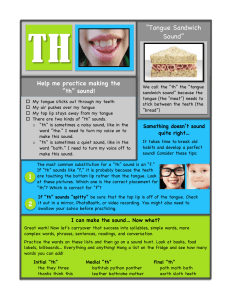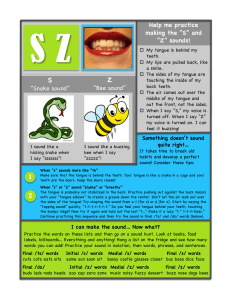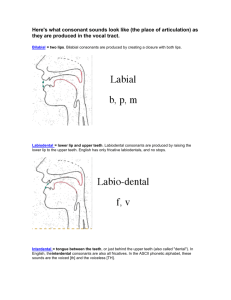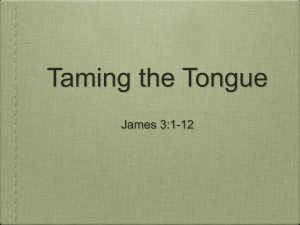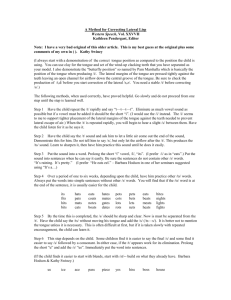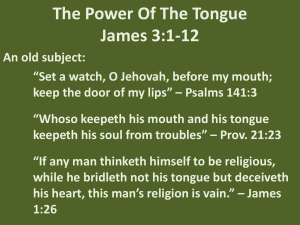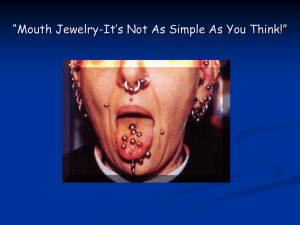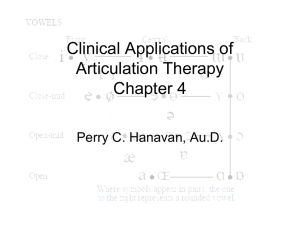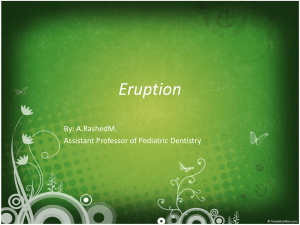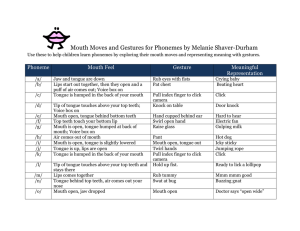PEDIATRIC DENTISTRY
advertisement
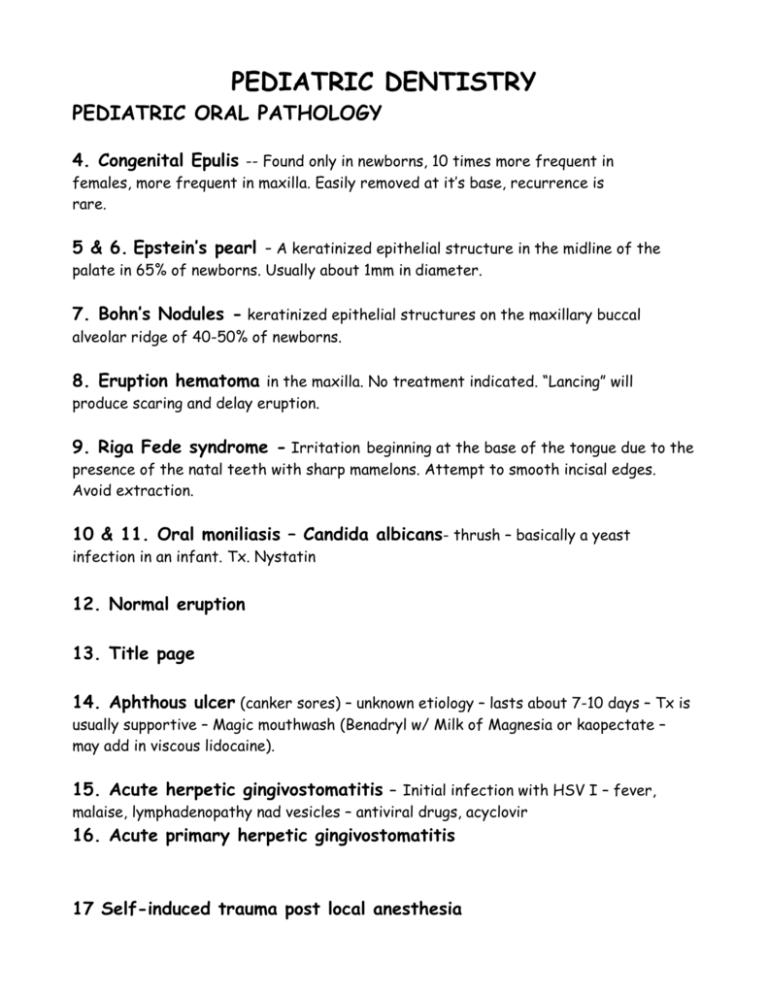
PEDIATRIC DENTISTRY PEDIATRIC ORAL PATHOLOGY 4. Congenital Epulis -- Found only in newborns, 10 times more frequent in females, more frequent in maxilla. Easily removed at it’s base, recurrence is rare. 5 & 6. Epstein’s pearl - A keratinized epithelial structure in the midline of the palate in 65% of newborns. Usually about 1mm in diameter. 7. Bohn’s Nodules - keratinized epithelial structures on the maxillary buccal alveolar ridge of 40-50% of newborns. 8. Eruption hematoma in the maxilla. No treatment indicated. “Lancing” will produce scaring and delay eruption. 9. Riga Fede syndrome - Irritation beginning at the base of the tongue due to the presence of the natal teeth with sharp mamelons. Attempt to smooth incisal edges. Avoid extraction. 10 & 11. Oral moniliasis – Candida albicans- thrush – basically a yeast infection in an infant. Tx. Nystatin 12. Normal eruption 13. Title page 14. Aphthous ulcer (canker sores) – unknown etiology – lasts about 7-10 days – Tx is usually supportive – Magic mouthwash (Benadryl w/ Milk of Magnesia or kaopectate – may add in viscous lidocaine). 15. Acute herpetic gingivostomatitis – Initial infection with HSV I – fever, malaise, lymphadenopathy nad vesicles – antiviral drugs, acyclovir 16. Acute primary herpetic gingivostomatitis 17 Self-induced trauma post local anesthesia 18. Self-induced trauma of the lip post mandibular block injection 19. Angular cheilitis - This is another type of candidiasis which is seen at the level of the labial commissure. In HIV negative individuals angular cheilitis is generally associated to loss of the vertical dimension or in patients who overclose. Tx. nystatin 20. Strawberry tongue – Beta hemolytic strep – Rheumatic fever 21. Burn eschar – physical or chemical 22. Geographic tongue - The classic manifestation is an area of erythema, with atrophy of the filiform papillae of the tongue. Benign migratory glossitis is a benign condition that occurs in up to 3% of the general population. Most often, patients are asymptomatic; however, some patients report increased sensitivity to hot and spicy foods. 23. Geographic tongue 24. Ranula – mucocele on the floor of the mouth. Treatment depends on size. Small ranulae are excised; larger ones are marsupialized, i.e. de-roofed so that the cyst opens into the floor of the mouth. Usually recurs 25. Lipoma - The lipoma is a benign tumor (neoplasm) of fatty tissue. It may be painless and slowly enlarges, sometimes to become several inches across. It can occur at any age and will not diminish on its own, hence, must be surgically removed. 26. Lymphoepithelial cyst - a movable, painless submucosal nodule occuring in the anterior floor of the mouth or posterior lateral tongue. It’s asymptomatic and tx is by conservative surgical excision. The lesion seldom recurs 27. Traumatic laceration; tooth fragments? 28. Mucocele - These mucous cysts usually occur in the lower lip of young adults and result from rupture of the duct of a minor salivary gland. 29 & 30 Excessive lingual frenum – Ankyloglossia - tongue-tied appearance from high attachment of lingual frenum to tip of tongue. Not necessary to treat surgically if child can touch maxillary incisors with tip of tongue. 31. Linea alba - Common, benign, hyperplastic reaction which results from chronic irritation. Manifest as a white horizontal line midway along the buccal mucosa. 32. Human bite; abuse 33. Impetigo…Staph Aureus - Impetigo is a skin infection that is generally caused by Group A Strep or Staph aureus. It’s infectious. 34 & 35. Tinea Corporis …”Ringworm” - Tinea corporis is an infection of the body surface by mold-like fungi. Susceptibility to fungal infection is increased by poor hygiene, prolonged wetness of the skin (such as from sweating). It’s contagious and can be got from combs, clothing, shower, or pool surfaces. They can also be transmitted by contact with pets that carry the fungus (cats are common carriers). 36. Cellulitis - Swollen face caused by dentoalveolar abscess. Dental infection involving the orbit is severe. Immediate extraction and antibiotics are necessary. The choice of antibiotic in children should be a cephalosporin (Keflex) orAugmentin or Clindomycin. The principal bacteria of such infections in primary teeth are primarily gram negative anerobes which in many children are Penicillin resistant. 37. Lymphadenopathy Associated w Tuberculosis 38. Diphenylhydantoin (Dilantin) – Gingival hyperplasia caused by Dilantin sodium. Tx – gingivectomy and good oral hygiene. 39. Cyclosporin Hyperplasia 40. Pulp Polyp…Epithelialized! 41. Ectopic Eruption… Over-retention 42. Fistulous Tract (Parulis) - A nodule on the gingiva at site of draining sinus tract – usually associated with non-vital teeth. 43. Title page 44. Joke 45 & 46 &47. Gemination – A crown that is extra wide due to the development of two crowns from one tooth germ. 48. Oligodontia - the congenital absence of many teeth. May be associated with a number of conditions including ectodermal dysplasia, oral clefting and Rieger Syndrome. 49. Supernumeraries… Mesiodens? 50. Over retention & ectopic eruption 51. Space loss 52. Demineralization 53. Fluorosis - generalized white fluorosis, a result of systemic overdose. 54. Hypoplasia - (reduced quantity of enamel) on permanent maxillary central incisors and canines, caused by illness with high fever at about age 6 months to 1 year. 55. Hypoplasia 56. Extrinsic bacterial chromogenic stain - is found mainly on the anterior teeth. An indication of a caries – prone child. Can be removed with professional prophylaxis. 57. Extrinsic iron stain – From ingestion of iron drops. Can be removed with professional prophylaxis. 58. Dentinogenesis imperfecta - Early loss of enamel due to faulty (smooth) Dentino-enamel junction. Has also been referred to as hereditary opalescent dentin, when it is transmitted as a autosomal dominant gene. 59 & 60. Tetracycline intrinsic stain – From tetracycline given to this child during crown formation 61. Title page 62. Papilloma - A firm, white, rough, exophytic, pedunculated, nontender soft tissue enlargement is fixed to the surface mucosa but not to underlying structures. May be caused by HPV – contagious 63. Acute myelocytic leukemia (AML) – Normal bone marrow is replaced by abnormal primitive hematopoietic cells. If untreated, survival is weeks to months. With treatment, 5yr survival is 20-40% 64. Giant cell granuloma - A non-neoplastic inflammatory lesion, usually of the jaw or gingiva, containing large, multinucleated cells. Peripheral giant cell granuloma refers to the gingiva; central refers to the jaw. 65. Cystic hygroma of the tongue - A cystic hygroma is a thin-walled, sac-like structure filled with lymph. It occurs most commonly in the head and neck area and often appears as a soft bulge under the skin. 66. Papillon le Fevre syndrome - This is an inherited disease of abnormal keratinization affecting infants and young children. Redness and thickening of the palms and soles simulating psoriasis. Hyperhidrosis that may cause an unpleasant odor. Hair is usually normal but may be sparse. Periodontosis resulting in severe gingivitis that may predispose to loss of the teeth . The permanent teeth may be lost in the same fashion. 67. Hystiocytosis X - a generic term that refers to an increase in the number of histiocytes, a type of white blood cell, that act as scavengers to remove foreign material from the blood and tissues. 68. Letterer Siwe disease – Worst prognosis of the Langerhans cell Histiocytosis – 70% mortality 69. Rhabdomyosarcoma is a fast-growing, highly malignant tumor which accounts for over half of the soft tissue sarcomas in children. About 50% mortality
